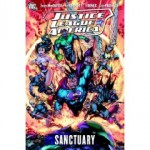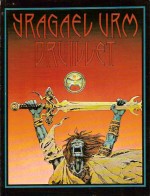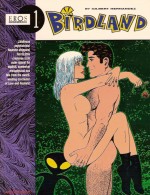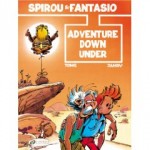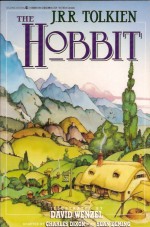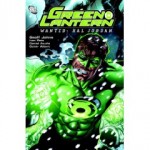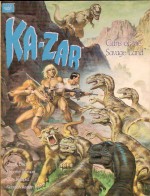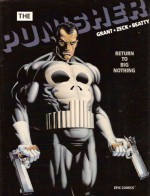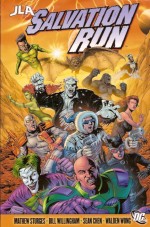
By Matthew Sturges, Bill Willingham, Sean Chen, Walden Wong & others (DC Comics)
ISBN: 978-1-84576-981-9
It all makes sense really: if you’re normal folks in a world of casually destructive gods and monsters wouldn’t you want to get rid of them? That’s the premise of this dark and sardonic take on George II’s “Wahr on Turrrism†as seen through the gaudy lens of the DC universe.
Salvation Run was a seven part miniseries which spilled over most prominently into Justice League of America (see Sanctuary) and Catwoman (both Catwoman: Crime Pays and Catwoman: the Long Road Home), although the build-up, which saw a large number of DC super-villains seemingly vanish was featured in a quite a number of disparate DC titles.
The first chapter ‘Hellish New World’ (by Willingham, Chen & Wong) follows the murder of Bart Allan in Flash – Fastest Man Alive: Full Throttle and concentrates on that hero’s killers as they try to survive on a deadly alien world. They had been captured and sent there by the hard-line political animal Amanda Waller and her pet penal battalion The Suicide Squad, a government-controlled team of super-villains acting as a black-ops team in return for (limited) freedom. It’s not long before a multitude of metahumans ranging from cheap thugs like Black Spider and Hyena to “aristocrats†such as Cheetah, Clayface and the Joker are also unceremoniously dumped and forgotten…
Clandestinely deported without trial, they were told their new world had everything they needed to survive, but when they fell out of teleportational Boom Tubes they all quickly discovered that somebody lied: everything animal, vegetable and mineral on this Hellworld has been programmed to kill them…
In ‘Take this World and Shove It!’ the body-count of (admittedly minor) bad-guys begins to mount and in a grisly echo of Lord of the Flies the Joker takes charge – until the final batch of transportees arrive: a group which includes Lex Luthor, Catwoman and an incredibly scared and angry Suicide Squad, finally betrayed by their Government taskmasters…
Matthew Sturges took over the scripting with ‘All You Need is Hate’ and the trenchant black comedy was cranked up as rivalries and philosophical differences divided the villains on all but one point – that there were enough mad scientists on hand to find a way back to Earth…
‘Life is But a Nightmare’ revealed that the never-unaware Batman had planted a heroic infiltrator among the villains, and as immortal Vandal Savage lured a small harem of Bad Girls to a distant “safe area†to begin populating the planet with his progeny, the civil war among the factions claimed its first major player, whilst ‘Through a Glass Deadly’ (illustrated by Joe Bennett and Belardino Brabo) saw the morally ambivalent Catwoman forced to betray Batman’s spy to the villains just as the true masters of Hellworld reveal their own long-range plans for the deported villains.
‘Burning Down the World’ saw open warfare break out as Luthor and Joker attempt to beat each other to death whilst all about them Hellworld’s creators attack and the violent deadly affair ends with a mass prison break when Luthor’s genius returned them all (the survivors anyway) to Earth with renewed hatred of society and a huge simmering grudge to work off… ‘We Gotta Get Out of this Planet’ (by Sturges, Chen, Wong and Wayne Faucher) ends in spectacular fashion a hard look at DC’s dark side and firmly re-establishes the pecking order of the underworld just in time for the ultimate shake-up of Final Crisis.
Wicked, funny and grimly gory this is a fascinating look at the other costumes in the DCU, but there’s enough high concept and clever subtext to delight those casual readers who look beyond the normal “who’s tougher than who†antics.
For clearer comprehension I advise reading Justice League of America: Sanctuary before attempting this book.
© 2008 DC Comics. All Rights Reserved.

